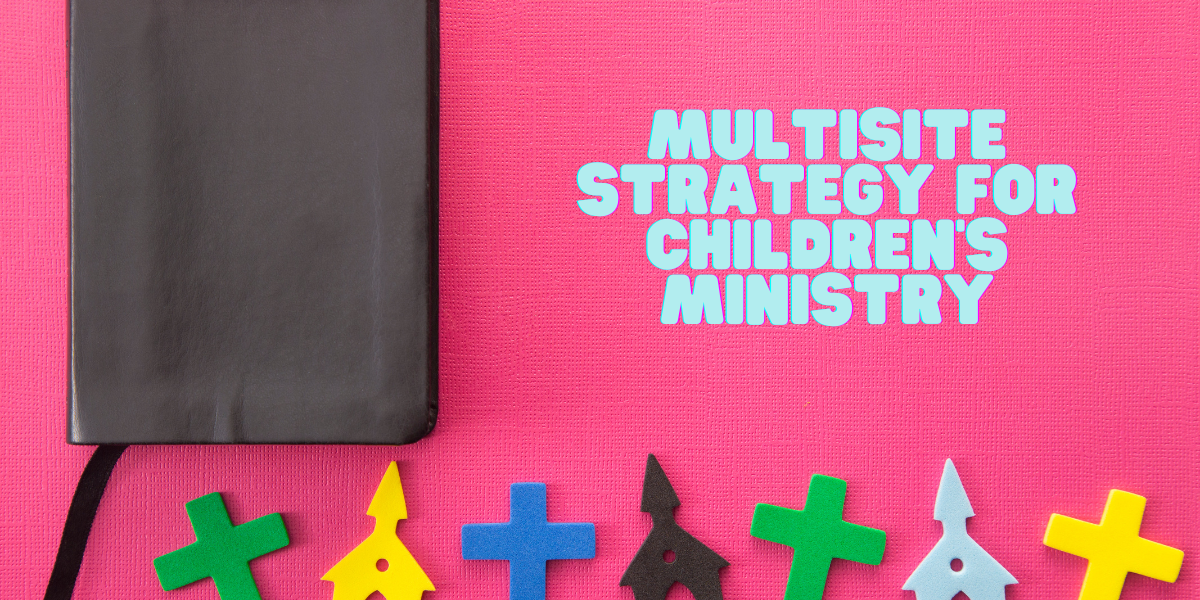
One of the most common questions I get asked as I consult and coach churches is, “What is the best model for taking our children’s ministry multisite?” As more and more churches are adding campuses or thinking about going multisite, I believe that developing a clear strategy for how you’re going to do children’s ministry at each of your campuses can make or break the success of your multisite endeavors. Over the years, I fell like we have developed a win-win strategy for multisite children’s ministry.
Over the years, I’ve identified three basic models for structuring multisite children’s ministries:
In the independent model, each campus has the freedom to choose its curriculum and branding. Each campus has its own identity, and they create their own separate environments for kids. Basically, your multisite children’s ministries function as a collection of autonomous ministries. Oftentimes, there is very little collaboration between campuses that use this model. Whether it is intentional or not, there is not a lot of synergy across campuses either. If a family moves from one campus to the next, they will have a different experience at each campus. It is basically like a separate church plant, not necessarily a multisite.
In the centralized model, each campus is identical to the original campus. The branding and environmental designs are the same, and even the staff structure is the same. Often the children’s ministry leaders at each multisite report to a pastor or executive director at the main campus. Typically under the direction of a central staff team, these churches replicate their children’s ministry at each campus. Because of the uniformity at each site, there is a lot of synergy across campuses. A centralized approach works best when churches plant campuses of similar size and want to create the exact same experience across all campuses.
In the decentralized model, there is a transfer of authority and decision-making away from the central staff/main campus to each individual location. The result is that each campus has some autonomy in how they design their children’s ministry. Some churches use this model to allow campuses to choose from a list of different curriculum options that are pre-approved by the church. Still, other churches use this model to share the same Children’s Ministries name, but there are different ministry directors who use different curricula and have different themes.
When I was leading the children’s ministry at 12Stone Church, we developed a Collaborative Model. Basically our strategy for multisite was a hybrid of the centralized & decentralized models. While our central staff was responsible for the overall direction, vision, systems, & philosophy of the children’s ministry across all campuses…the campus staff in charge of each children’s ministry reported directly to their Campus Pastor. In other words, I was not their boss. We were decentralized in that they didn’t report to me at all. As the Children’s Pastor at 12Stone, my role was to lead the various teams through influence & coaching. Any synergy created among our various teams was highly relational.
Each of our campuses chose to use the same curriculum & collaborate together to create the best Sunday experience for kids and families…even though they were not required to do so. We wanted to elevate the values, not the attributes across our campuses. We accomplished this through idea sharing…but allowed the interpretation of those ideas to take place at each campus. In other words, we worked together but allowed each campus to play to their strengths. For example, the strength of our larger campuses was often the large group so they maximized the large group experience. While some of the smaller campuses had the ability to create deeper connections through small groups. Each campus played to their strengths but fought for the same values. Our goal was not that each campus delivered an identical experience but that the DNA of 12Stone was consistent across each of our campuses.
The key to the success of this model is relationships. As a leader, you can’t truly coach and influence others without first having a relationship with them. To develop those relationships, we would meet twice a month with the children’s ministry staff from each campus in a meeting we called CREATE. This is where we would design our Sunday services, share creative ideas, & monthly parent partnership tools. At the end of the day, we gave each campus the freedom to implement the strategy and ideas so they could maximize their strengths. The result was a win-win strategy for multisite children’s ministry.
Joe Wickman says:
Great post. Our first year of multisite found us floundering as we set ourselves up with a Centralized model, and then made our way toward the Collaborative model. The confusion caused some clunkiness in expectations and reporting structures. Now that all parties have embraced the Collaborative model, we’ve smoothed out much of the “square wheel” effect, and allowed each campus to maximize its strengths.
It’s a relief to see the distinctions you draw, and that we’re not the only ones who have experienced this.
eric echols says:
Thanks, Joe! When we launched our first campus, we tried to recreate what was happening at the main campus. It didn’t take long to realize that we needed to move to the Collaborative model.
Top 10 Post From July 2013 | Eric Echols says:
[…] A Win-Win Strategy For Multisite Children’s Ministry […]